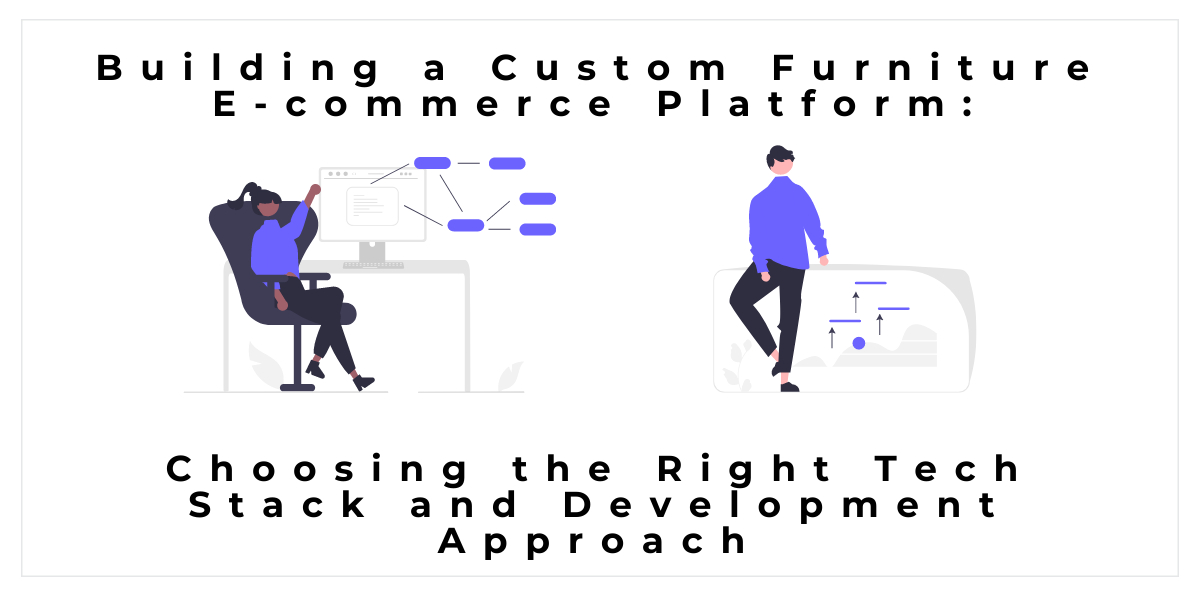In today's digital age, the furniture e-commerce industry is thriving, offering customers the convenience of shopping for furniture from the comfort of their homes. However, to stand out in this competitive market, many businesses are opting for custom e-commerce platforms. Building a custom furniture e-commerce platform requires careful consideration of the tech stack and development approach. This article explores the essential factors and offers unique insights to help you make the right choices for your furniture e-commerce venture.
Understanding the Importance of a Custom E-commerce Platform
Before diving into the technical aspects, let's discuss why a custom e-commerce platform is crucial for your furniture business. Unlike off-the-shelf solutions, a custom platform allows you to tailor every aspect of your online store to meet your unique needs. Here are some advantages:
1. Unique Brand Identity
A custom platform enables you to create a unique brand identity that resonates with your target audience. This is especially important in the furniture industry, where aesthetics play a significant role in purchasing decisions.
2. Scalability
As your furniture business grows, your e-commerce platform should be able to scale accordingly. Custom solutions are more adaptable to your business's changing needs.
3. Product Configurator Integration
One of the keys to success in the furniture e-commerce industry is the integration of a product configurator. This feature allows customers to personalize their furniture, creating a more engaging shopping experience. We'll discuss the product configurator ecommerce in more detail later in this article.
4. Enhanced User Experience
Custom platforms provide better user experiences, leading to higher customer satisfaction and increased sales. You have full control over the design and functionality.
Choosing the Right Tech Stack
Selecting the appropriate technology stack is a critical decision when building a custom furniture e-commerce platform. The tech stack consists of the programming languages, frameworks, and tools used to develop your platform. Here's how to make the right choices:
Front-End Development
1. HTML, CSS, and JavaScript
These are the fundamental building blocks of any website. You can consider using modern frameworks like React, Angular, or Vue.js for a dynamic and responsive front end.
2. Responsive Design
Given that customers may browse your site on various devices, ensuring a responsive design is crucial. This provides a seamless shopping experience across desktops, tablets, and smartphones.
Back-End Development
1. Server-Side Language
Choose a server-side language that suits your development team's expertise and project requirements. Popular options include Node.js, Python, Ruby, and PHP.
2. Database Management
Opt for a robust and scalable database management system (DBMS). PostgreSQL, MySQL, and MongoDB are common choices for e-commerce platforms.
3. Hosting and Infrastructure
Consider cloud hosting providers like Amazon Web Services (AWS), Google Cloud Platform (GCP), or Microsoft Azure for scalability and reliability. These platforms offer essential services like load balancing and auto-scaling to handle traffic spikes during promotions or sales.
4. Security
Security is paramount when handling customer data and payments. Implement robust encryption, secure payment gateways, and regular security audits to protect your e-commerce platform from threats.
Incorporating a Product Configurator
The term "product configurator" is a buzzword in the furniture e-commerce industry. It allows customers to customize furniture pieces by choosing different materials, colors, sizes, and other features. Integrating a product configurator into your custom platform can set you apart from the competition. Here are the steps to consider:
- User-Friendly Interface
Design a user-friendly interface that guides customers through the configuration process. Make it intuitive and visually appealing.
- 3D Visualization
Utilize 3D visualization technology to show customers a lifelike representation of their custom furniture. This can help bridge the gap between online shopping and the in-store experience.
- Real-Time Price Calculation
As customers make selections, the configurator should calculate the real-time price, ensuring transparency and avoiding surprises at checkout.
- Compatibility with Mobile Devices
Many customers use mobile devices for online shopping. Ensure your product configurator works seamlessly on smartphones and tablets.
- Integration with Inventory Management
Your product configurator should sync with your inventory management system to ensure that customers are configuring products that are in stock.
Development Approach: Agile Methodology
To ensure a successful custom e-commerce platform, consider adopting an Agile development methodology. Agile is an iterative and collaborative approach that allows for flexibility and continuous improvements. Here's how it benefits your project:
1. Continuous Feedback
Agile encourages constant collaboration with stakeholders and customers. This feedback loop ensures that the platform aligns with evolving business needs.
2. Flexibility
The furniture industry is subject to design trends and changing customer preferences. Agile allows you to make quick adjustments and implement new features as needed.
3. Risk Mitigation
By breaking the project into smaller, manageable tasks, Agile reduces the risk of costly errors and setbacks.
Conclusion
Building a custom furniture e-commerce platform with a product configurator is an exciting venture that can set your business apart. Carefully selecting the right tech stack and development approach is essential to achieving success in this competitive market. With a focus on creating a unique brand identity, delivering an exceptional user experience, and embracing the power of customization, you can build a platform that engages customers and drives sales in the ever-evolving world of furniture e-commerce.








